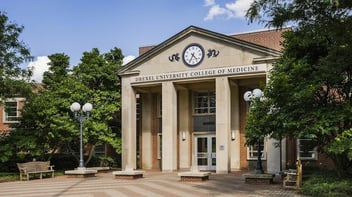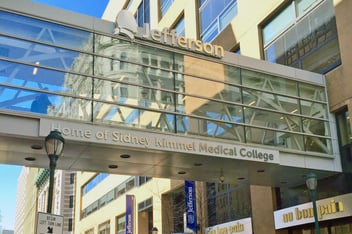Must-knows about medical school year by year

Across the US, medical school is typically organized into four years, and while each medical school may have slight variations in their curriculum, most of them follow a similar structure to ensure consistency and prepare students for residency. Here is a general overview of the curriculum:
Year 1
The first year of medical school is typically dedicated to the basic sciences portion of the preclinical phase. Its primary objective is to establish a robust foundation in basic sciences and medical knowledge. Here's an overview of what the first year entails:
- Anatomy: The anatomy course often involves hands-on learning through human cadaver dissection labs. You will study the structure and organization of the human body, including detailed knowledge of anatomical relationships and functions.
- Physiology: Physiology focuses on the normal functioning of the human body and its various systems. You will learn about the mechanisms behind bodily functions such as cardiovascular, respiratory, renal, and neurological systems.
- Biochemistry: In biochemistry you will learn about metabolism, molecular genetics, enzymes, and biochemical pathways. While memorization is essential, understanding the concepts is also emphasized.
- Pharmacology/Pathology: These two topics are briefly touched upon in first year as they relate to anatomy/physiology but are further emphasized in second year.
The first year of medical school often feels like an extension of the higher-level pre-med courses taken during undergraduate studies. However, the depth of knowledge required is significantly greater, and there is a substantial amount of memorization involved. Nonetheless, courses like physiology and biochemistry emphasize understanding the underlying principles rather than mere memorization. The preclinical years are a combination of lectures, laboratory sessions, small group discussions, and interactive learning activities.
Many medical schools also incorporate introductory clinical skills training and early patient exposure through both simulated patients as well basic patient interviewing sessions, however, the emphasis and weight of these early clinical exposures are more for students to learn to interact with patients.
While the first year of medical school is a steep learning curve, once you get the hang of how to study effectively and take frequent exams the year goes fairly smoothly.
Year 2
The second year of medical school is often considered the most challenging. While it continues with preclinical courses, the emphasis shifts towards pharmacology and pathology. These subjects require significant memorization, and many find it challenging to retain all the drug names, mechanisms of action, and disease processes. Additionally, microbiology and immunology are covered, which are also content-heavy and require memorization.
One significant hurdle during the second year is preparing for the USMLE Step 1 exam. While this exam is now scored as pass/fail, it still covers an extensive amount of content and requires dedicated studying. Although the reduced pressure of score reporting allows for more flexibility in study duration, you must allocate additional time for USMLE Step 1 preparation on top of regular coursework.
The second year is also a time for you to prepare for their transition to the clinical phase of medical school. This involves honing history-taking and physical examination skills, as well as developing a differential diagnosis for patient encounters. Students may participate in clinical skills workshops, simulated patient encounters, and case-based learning activities to improve their clinical skills and prepare for the upcoming clinical rotations.
Overall, the second year requires diligent effort to manage the content-heavy courses, prepare for the USMLE Step 1, and develop the necessary clinical skills for the transition to the clinical phase of medical training. It is essential for you to maintain a structured study schedule, seek support from peers and faculty, and practice effective study strategies to navigate the challenges of this year successfully.
Year 3
Year 3 marks the transition for medical students from classroom-based learning to clinical rotations, also known as clerkships. These rotations provide hands-on experience in various core specialties, allowing students to apply their knowledge in real patient care settings. At the end of each rotation, there is an exam, and students' performance helps determine their overall grade. The six core rotations in Year 3 include Internal Medicine (12 weeks), Surgery (12 weeks), Pediatrics (6 weeks), Family Medicine (6 weeks), Obstetrics/Gynecology (6 weeks), and Psychiatry (6 weeks). The third year of medical school differs significantly from the first two years, offering both advantages and challenges.
One of the aspects that students appreciate about the third year is the opportunity for hands-on patient care, exposure to different specialties, and the chance to work in a hospital alongside residents and physicians. This transition to clinical rotations fulfills the long-awaited dream for most medical students. Year 3 provides direct patient interaction and allows students to actively participate in patient care. This hands-on experience enables them to apply their knowledge in real-world scenarios, make clinical decisions, and witness the impact of medical interventions on patients. Rotations in various core specialties expose students to diverse fields of medicine, helping them explore potential career paths, develop clinical interests, and make informed decisions about their future specialties. Working alongside attending physicians, residents, and other healthcare professionals offers valuable learning opportunities. Students benefit from their guidance, expertise, and mentorship, gaining insights into clinical decision-making, patient management, and professional development.
During the third year, medical students often encounter challenges related to grading/evaluations, long hours/intensive workloads, and a lack of autonomy.
Unlike the pass/fail system during the preclinical years, the last two years of medical school typically employ a more nuanced grading system, including categories such as honors, high pass, pass, and fail. While this system provides a more comprehensive evaluation of a student's performance, it introduces subjectivity into the process. Grading can vary significantly depending on the individuals involved in evaluating students and their perceptions of the grading rubric. Evaluations are typically conducted by various attending physicians or faculty members who have interacted with the students during their clinical rotations. The subjective nature of these evaluations can result in variations in grading between clinical sites and individual assessors.
Further clinical rotations often involve long hours, including early mornings, late nights, and weekends. Students can no longer study at their own pace and convenience, as they must work around their clinical schedules.
At the end of the third year, students will take the USMLE Step 2 CK, which has gained more significance since Step 1 has become pass/fail. Therefore, dedicated study time should be allocated for this exam.
Overall, the third-year clerkships serve as a crucial bridge between classroom learning and practical patient care. They allow students to explore different specialties, gain clinical skills, and ultimately make informed decisions about their desired specialty.
Year 4
In the final year of medical school, students typically have more flexibility in selecting their clinical rotations. This allows them to tailor their education and gain further experience in the specialty they are considering for residency. One opportunity at the beginning of the fourth year is to complete advanced rotations, also known as sub-internships, in the desired specialty. These rotations provide a deeper immersion in the specialty and allow students to showcase their skills and dedication.
In a separate blog, we will explore away rotations during the fourth year, the residency application process, interviews, and the match. These steps are crucial as students transition from medical school to residency.
After completing the sub-internships and required fourth-year rotations, students can schedule "off blocks." During these off blocks, they have the flexibility to pursue various activities such as traveling, engaging in research projects, or taking elective courses aligned with their interests. The fourth year, once residency interviews are completed, can be a relatively more relaxed and enjoyable period of learning.
Overall, the fourth year of medical school is often considered students' favorite year, offering increased autonomy and an exciting time filled with new experiences and opportunities for growth.





